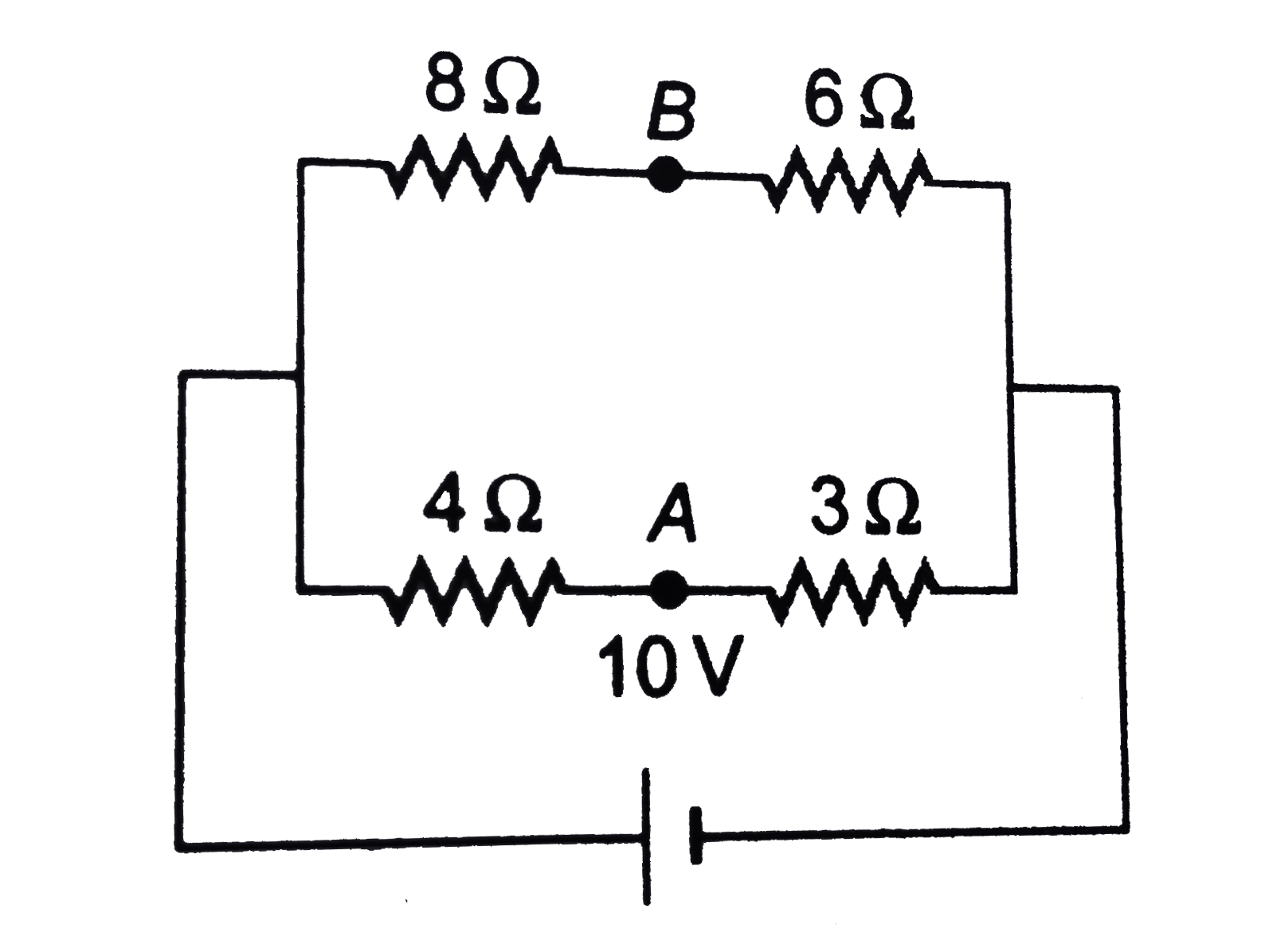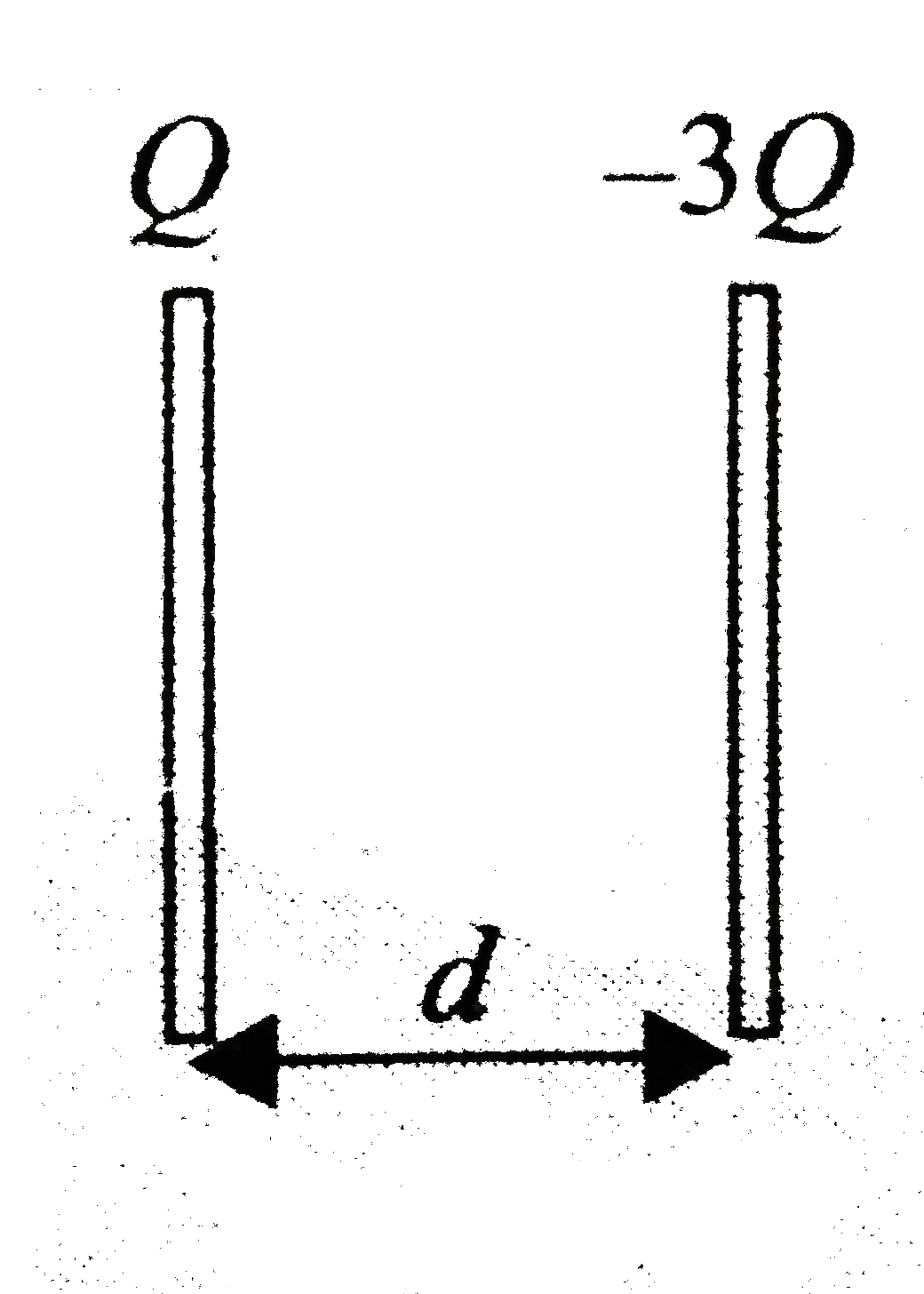A capacitor has a capacitance of 7.28μF. What amount of charge must be placed on each of its plates to make the potential difference between its plates equAl to 25.0V?
To solve the problem of finding the charge that must be placed on each plate of a capacitor with a capacitance of 7.28μF to achieve a potential difference of 25.0V, we can use the formula that relates charge (Q), capacitance (C), and voltage (V):
1. Identify the given values:
- Capacitance, C=7.28μF=7.28×10−6F
- Voltage, V=25.0V
2. Use the formula for charge:
The relationship between charge, capacitance, and voltage is given by the formula:
Q=C×V
3. Substitute the values into the formula:
Q=(7.28×10−6F)×(25.0V)
4. Calculate the charge:
Q=7.28×25.0×10−6C
Q=182×10−6C
Q=182μC
5. Conclusion:
The amount of charge that must be placed on each plate of the capacitor is 182μC.
- Capacitance, C=7.28μF=7.28×10−6F
- Voltage, V=25.0V
The relationship between charge, capacitance, and voltage is given by the formula:
Q=C×V
Q=(7.28×10−6F)×(25.0V)
Q=7.28×25.0×10−6C
Q=182×10−6C
Q=182μC
The amount of charge that must be placed on each plate of the capacitor is 182μC.
Topper's Solved these Questions
- CAPACITORSBOOK - DC PANDEY ENGLISHCHAPTER - CAPACITORSEXERCISE - OBJECTIVE_TYPE
1 Videos
- CAPACITORSBOOK - DC PANDEY ENGLISHCHAPTER - CAPACITORSEXERCISE - OBJECTIVE_TYPE
1 Videos
- ATOMSBOOK - DC PANDEY ENGLISHCHAPTER - ATOMSEXERCISE - MEDICAL ENTRANCES GALLERY
42 Videos
- COMMUNICATION SYSTEMBOOK - DC PANDEY ENGLISHCHAPTER - COMMUNICATION SYSTEMEXERCISE - Subjective
11 Videos
Similar Questions
One plate of a capacitor of capacitance 2μF has total charge +10μC and its other plate has total charge +40μC. The potential difference between the plates is (in Volt).
View SolutionA parallel air capacitance 245μF has a charge of magnitude 0.48μC on each plate. The plates are 0.328mm apart.
(a) What is the potential difference between the plates?
(b) What is the area of each plate?
(c) What is the surface charge density on each plate?
View Solution
Knowledge Check
The potential difference between points A and B is
 A2B5C11D18
A2B5C11D18
A charge of 1μC is given to one plate of a parallel - plate capacitor of capacitance 0.1μF and a charge of 2μC is given to the other plate . Find the potential difference developed between the plate .
View SolutionA capacitance balance is shown in figure. The balance has a weight attached on one side and capacitor that has a variable gap width on other side. Assume the upper plate of the capacitor has negligibles mass. When the potential difference between the plates is V0, the attractive force between the plates balance the weight of the hanging mass, Then:

View SolutionA parallel plate capacitor has capacitance C. If the charges of the plates are Q and −3Q, find of the

i. charges at the inner surfaces of the plates
ii. Potential difference between the plates
iii. charge flown if the plates are connected
iv. energy lost by the capacitor in (iii.)
v. charge flown if any plate is earthed.
View SolutionThe plates of a parallel plate capacitor are charged up to 200 V. A dielectric slab of thickness 4 mm is inserted between its plates. Then, to maintain the same potential difference between the plates of the capacitor, the distance between the plates increased by 3.2 mm. The dielectric constant of the dielectric slab is
View SolutionA parallel plate capacitor of capacitance 1μF has a charge of +2μC on one of the plates and a charge of +4μC on the other. The potential difference developed across the capacitor is
View SolutionIn a parallel plate capacitor of capacitor 1μF two plates are given charges 2μC and 4μC the potential difference between the plates of the capacitor is
_2019_CBT2_E01_002_Q01.png)
View SolutionThe area of parallel plates of an air capacitor is 0.2m2 and the distance between them is 0.01m The potential difference between the plates, the potential difference between the plates is 3000V. When a 0.01m thick sheet of an insulating material is placed between the plates, the potential difference decrease to 1000 volt. Determine (i) capacitance of capacitance before placing the sheet (ii) charge on each plate (iii) dielectric constant of material (iv) capacitanc after placing the insulator (v) absoulate permittivity of the dielectric.
View Solution
